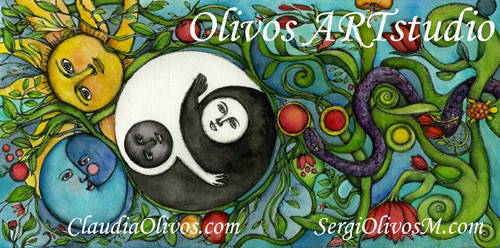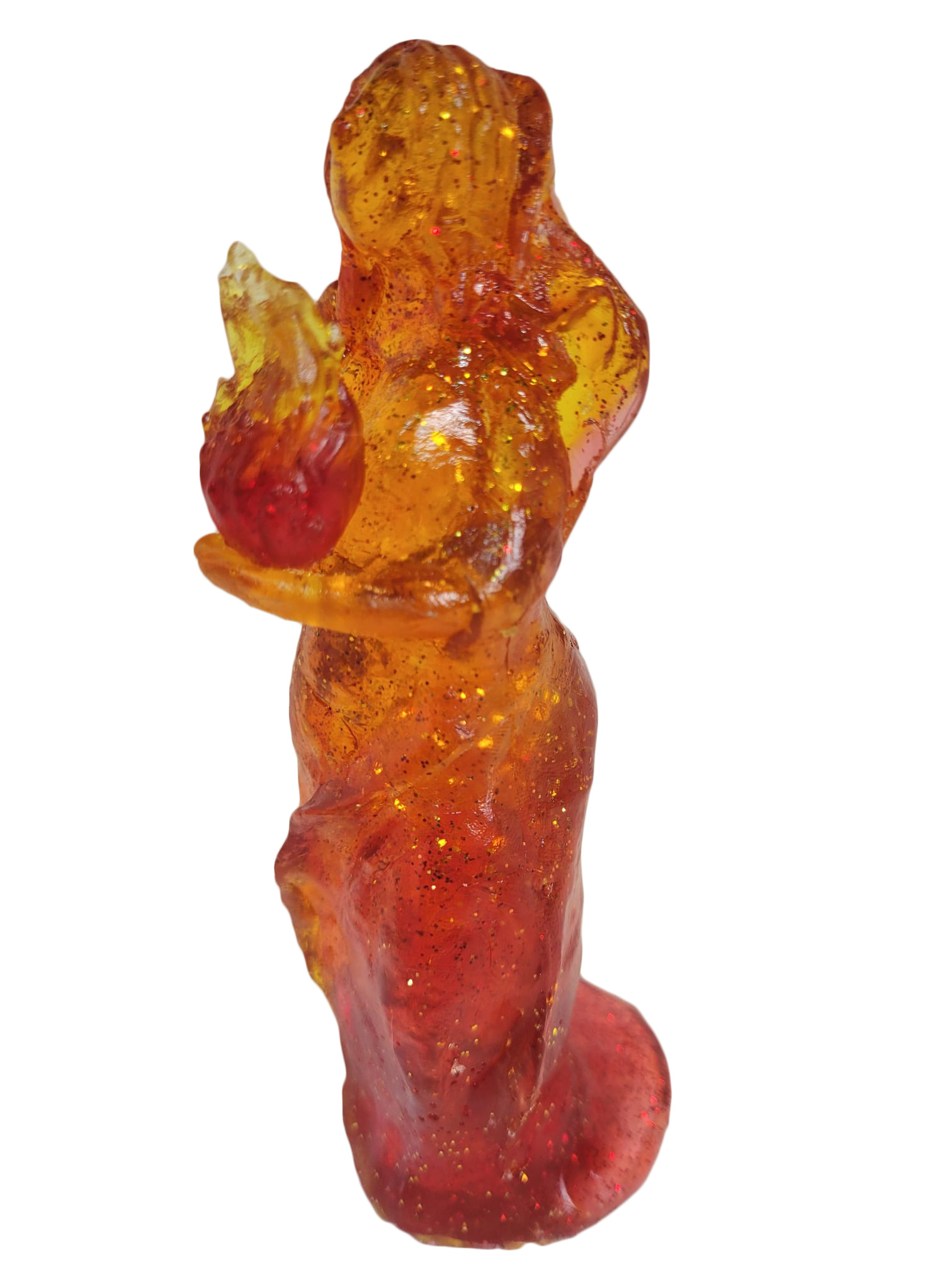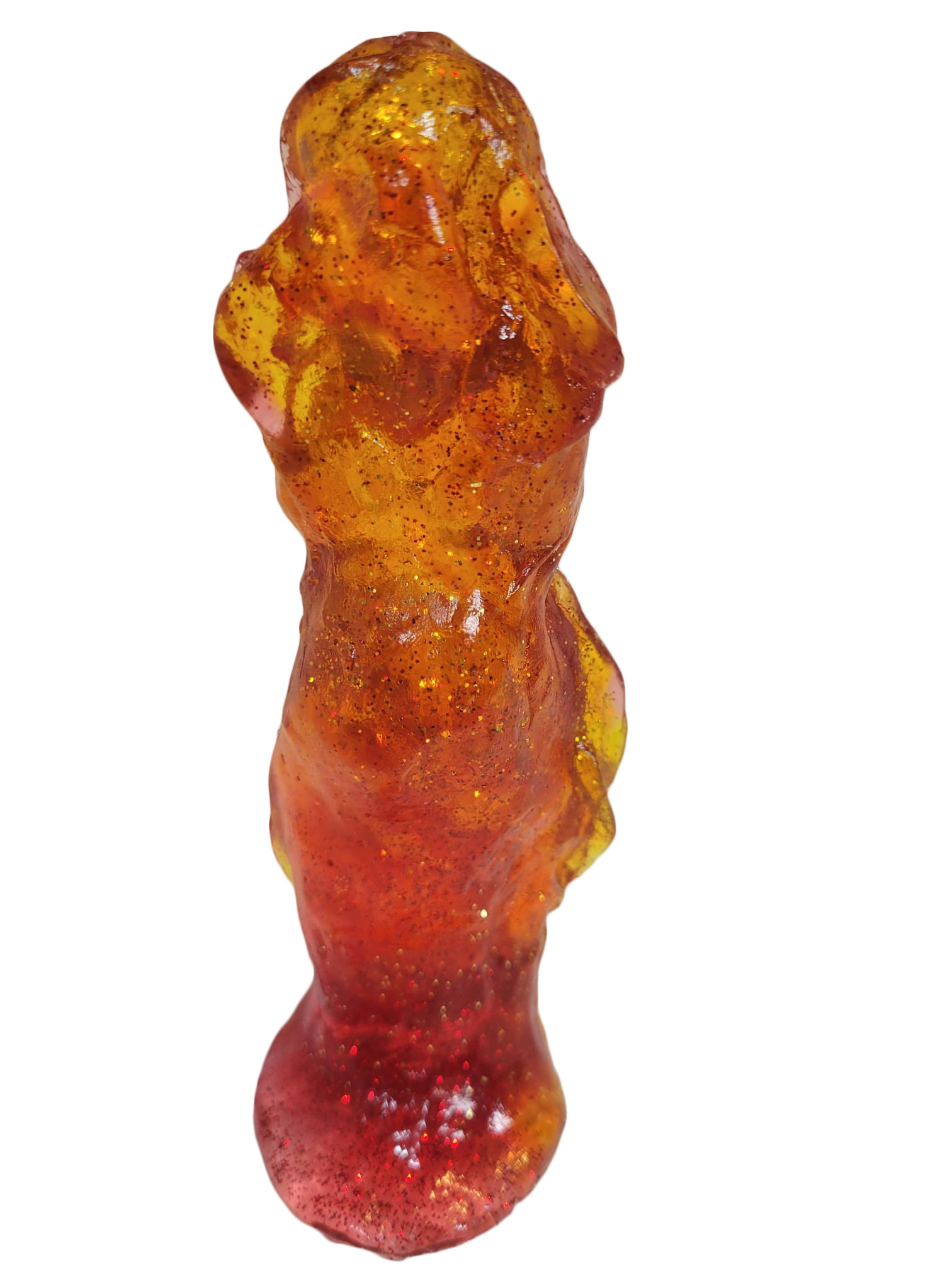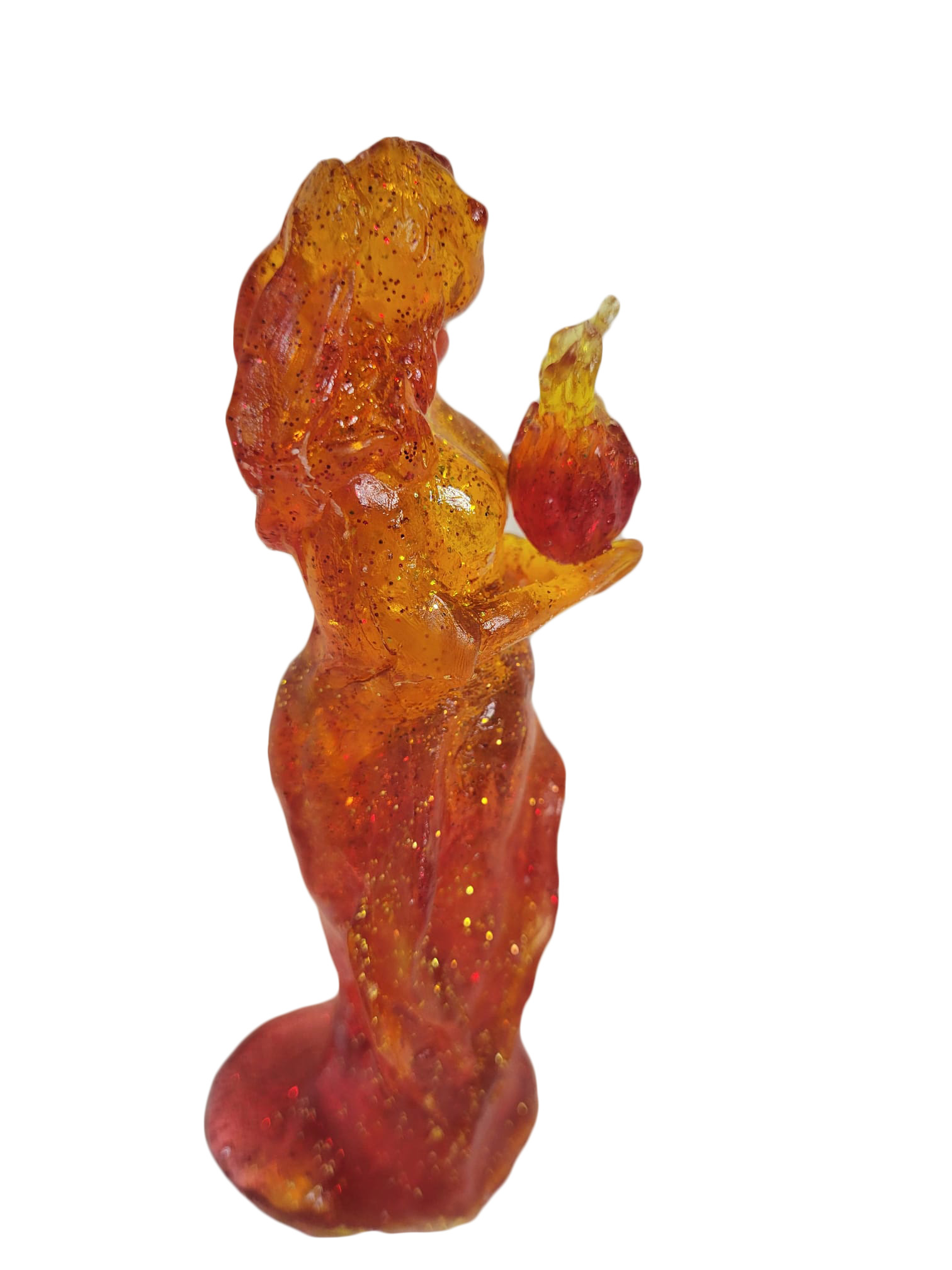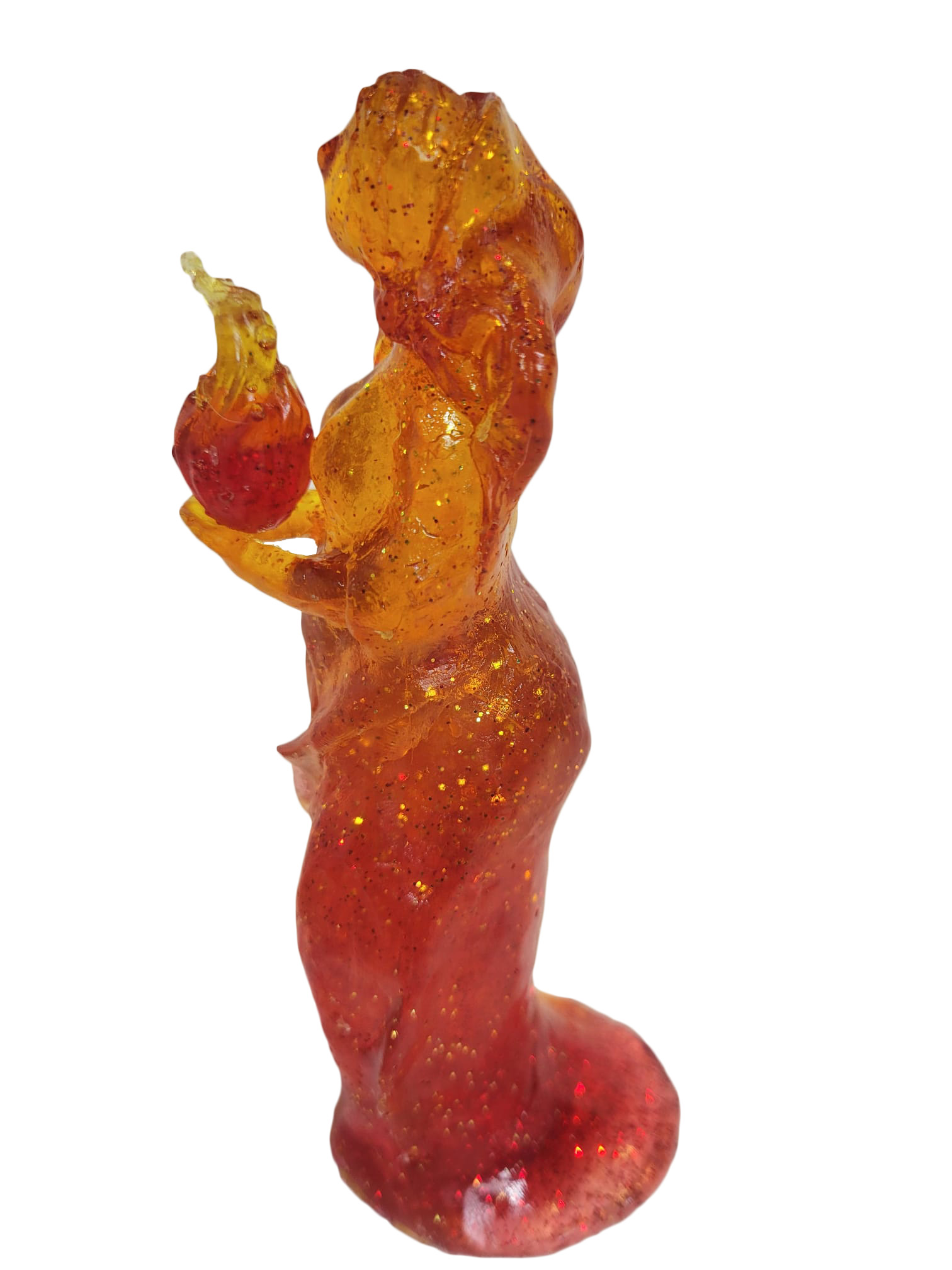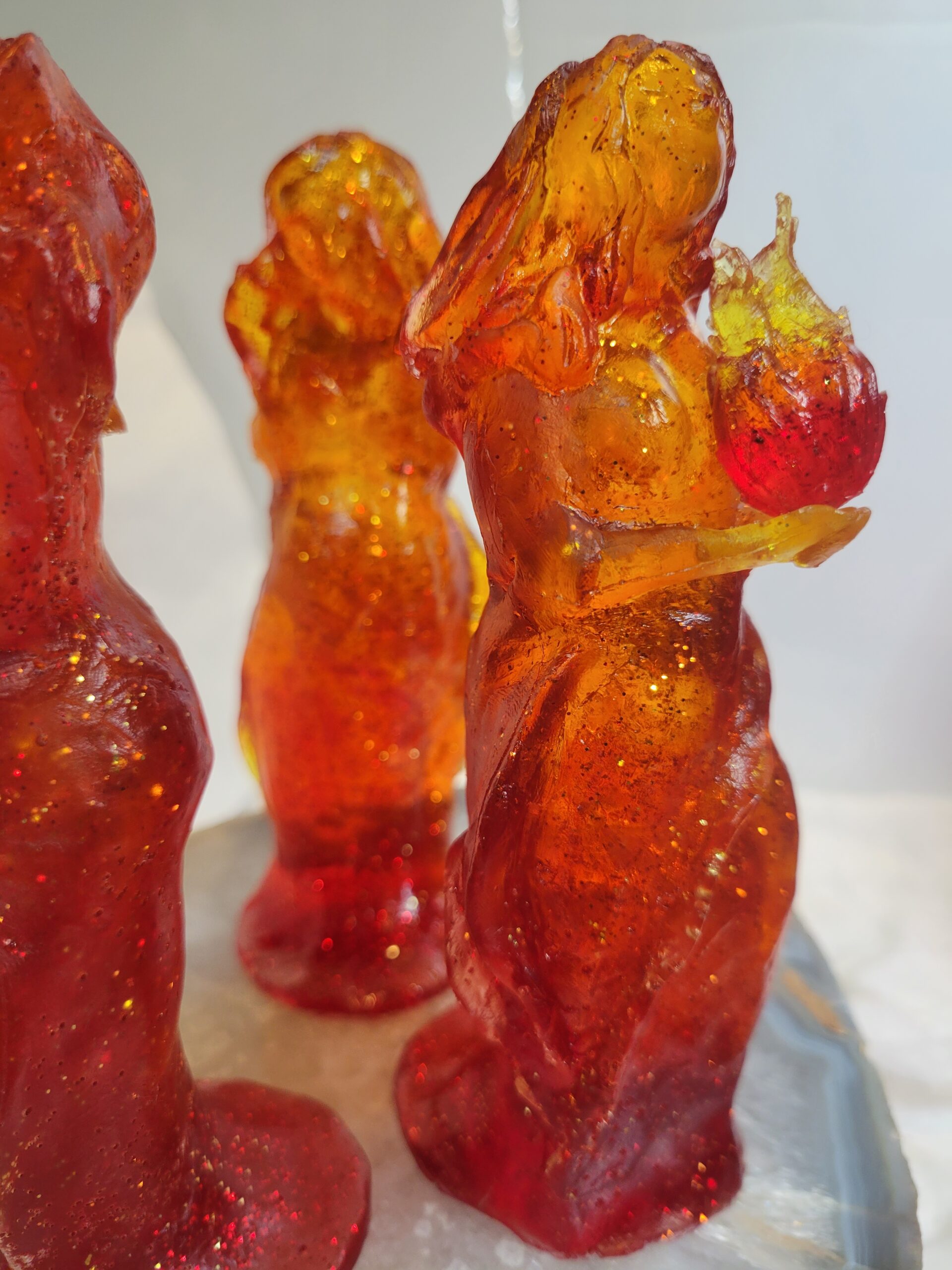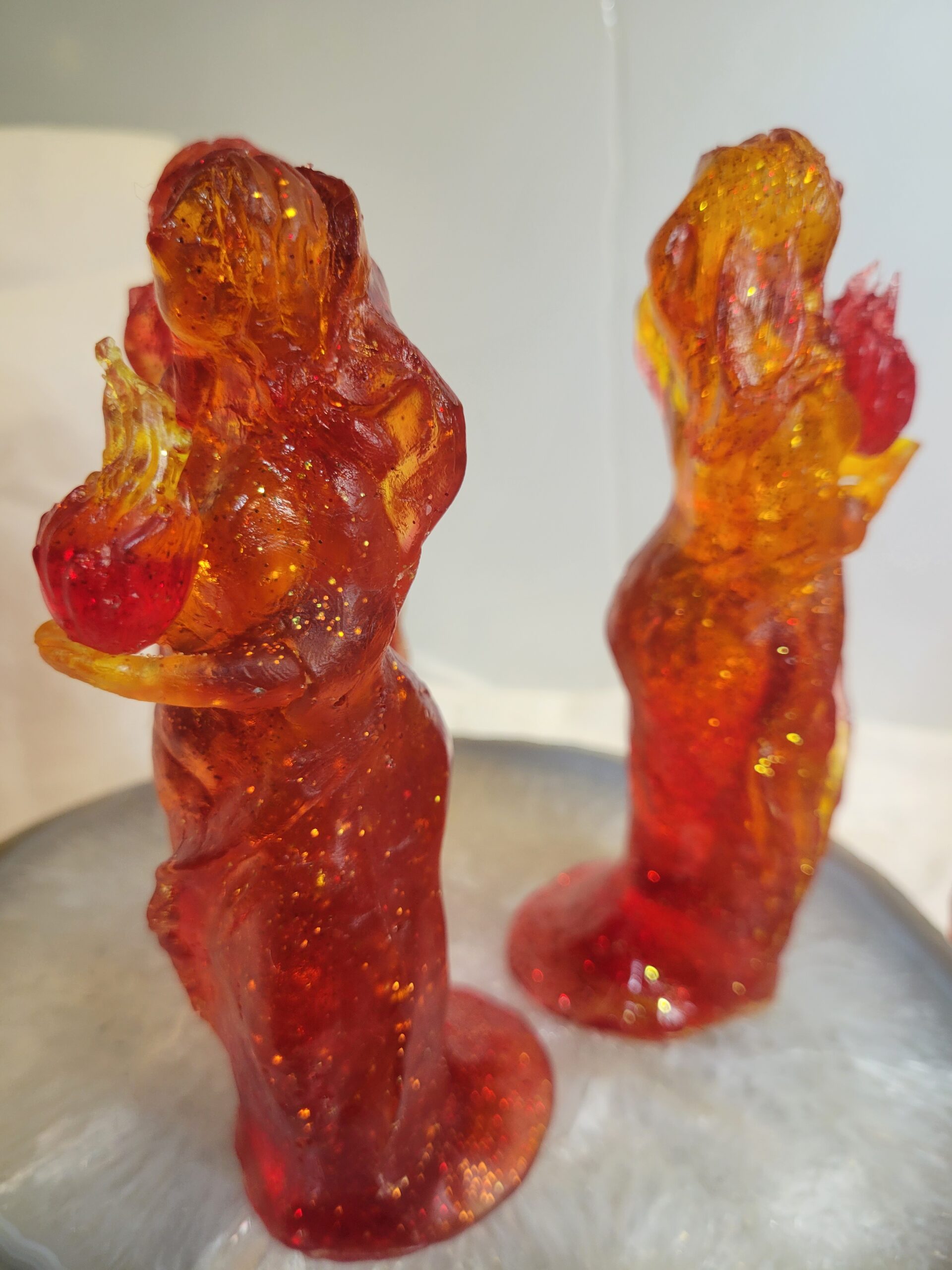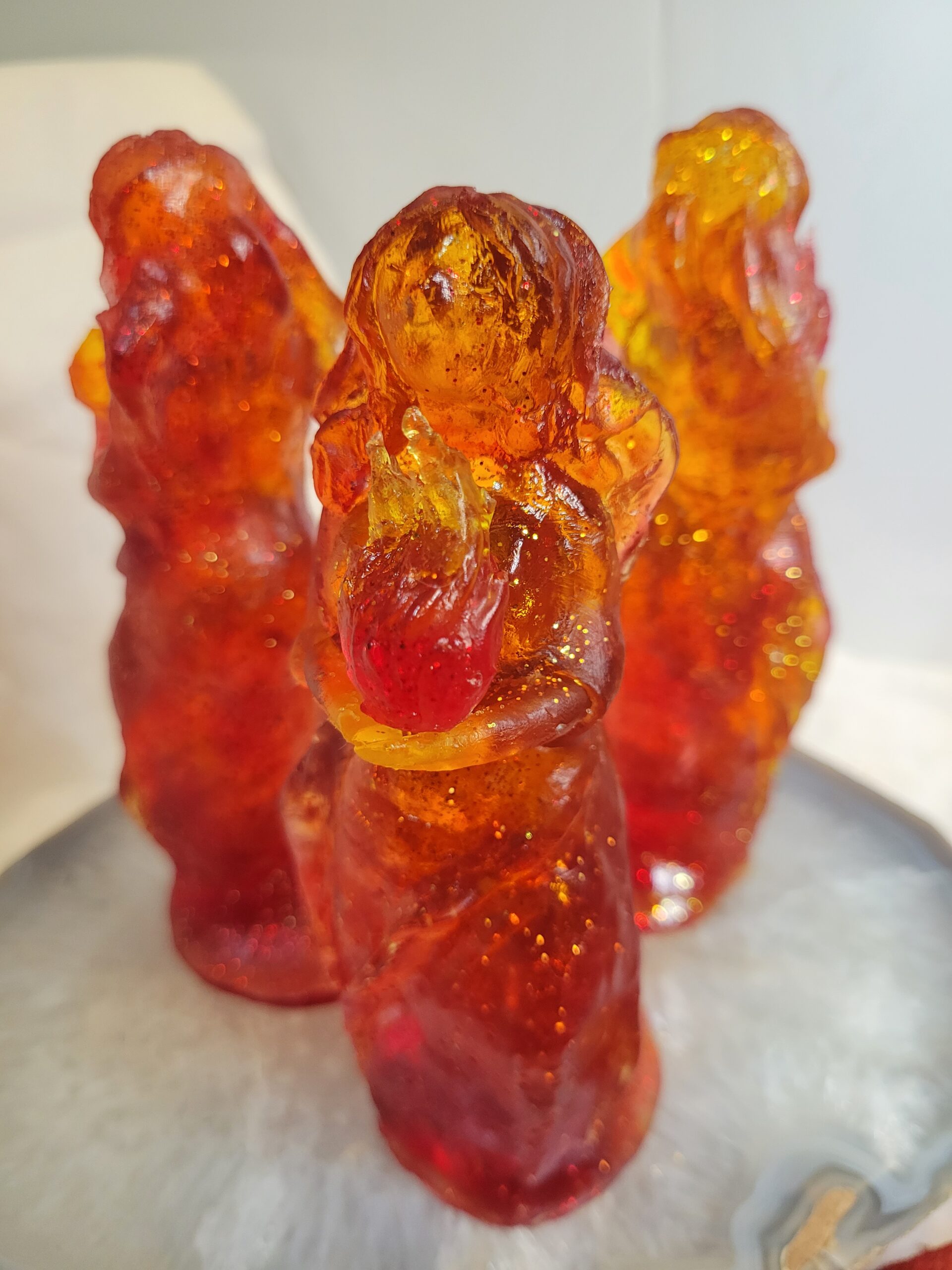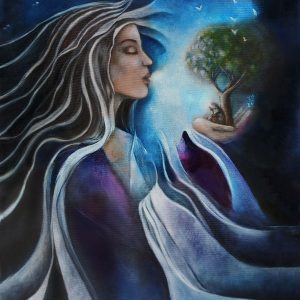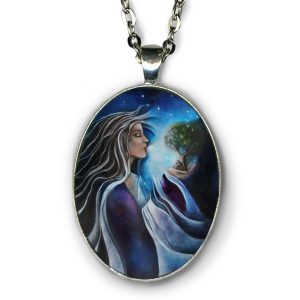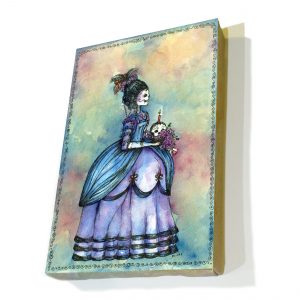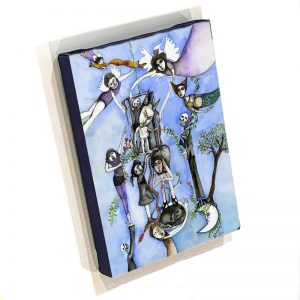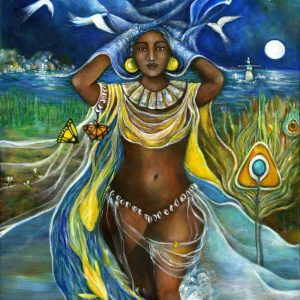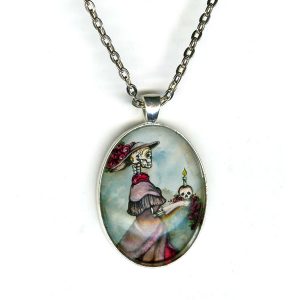Description
Celtic Goddess Brigid /Brigit/Bridget “The Exalted One” Brigid, Neolithic Goddesses of fertility and livestock, fire, protectress of healers, the home, and the hearth. She is the inspiration for Poets, metalworkers, and all craftspeople. She is associated with sacred fires and holy wells.As a goddess of Spring and fertility, she is also a protectress of babies and domesticated animals (pets and livestock). She is also known as a Solar deity, and it is said that when she was born, she floated to the skies and came back down with the eternal flame on her head. Brigid (pronounced Breed or Breej) was the daughter of the Dagda, the oldest god in the Tuatha dé Danann of the Celtic pantheon, and the daughter of the Morrigan. She is a peace bringer, and fierce warrior for Justice when needed.
She is not only a triple goddess, but can be seen as three different personas so that instead of representing the different stages of a woman’s life -Maiden, Mother, and Crone-, Brigid being represented her three particular characteristics:
Brigid, Goddess of the ‘Fire of the Hearth’: where she presided over fertility, family, childbirth, and healing.
Brigid, Goddess of the ‘Fire of the Forge’: she presided over crafts, weaving, embroidery, and metalsmithing, and a goddess who was concerned with justice, law, and order.
Brigid, Goddess of the ‘Fire of Inspiration, where she presided as the inspiration of poetry, song, and wisdom
Goddess Brig has been celebrated at the time of Imbolc for five millennia ago. In old Irish, Imbolc means “in the belly”, a reference to lambing and the renewal of Spring promises.
Brigid was a triple goddess – of healing, fire, and poetry. She also created a type of mourning due to the death of her son, Ruadán, who was a metalsmith, a very Sacred profession to the Celts, and in her mourning over his passing, her weeping was so deep and intense, that she wailed into song, creating Keeninga a form of weeping or wailing where the cries sound like songs. When Christianity arrived, they forbade keening at funerals, but the practice still remains in some parts.
Brigid was such a powerful Goddess that when Colonizers arrived with Christianity, she was quickly appropriated into the Catholic church as Saint Brigid, and one of her Sacred wells in Kildare Town was re-dedicated to St. Brigid, in spite of that, the Flame of Ireland continued to burn for Goddess Brigid there. Brigid also became, an icon for the gay community as it was known that she shared her life with another nun. Later, the Catholic church took away her sainthood as proof of her Pagan roots came to light, still, she remains as the Patron of Ireland along with Saint Patrick. Additionally, when the Scots and Irish were transported to the Caribbean as indentured servants, she evolved as the only white Lao part of the Voodoo/Vodou tradition, and she became Madame (Maman) Brigitte lwa.
All my art is made with great intention and prayer to bring you Love, Peace, and Joy.
Love & Light,
Claudia.
©ClaudiaOlivos
Artist reserves ALL rights.
